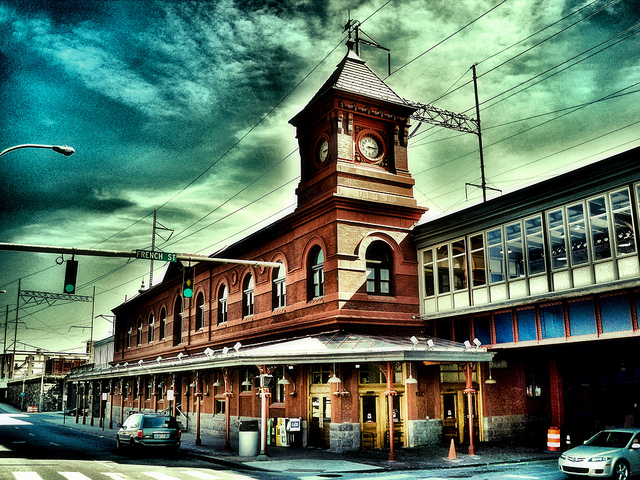When a leaning stretch of the I-495 bridge in Wilmington closed on June 2, traffic along the 1-95 corridor was crippled, leaving commuters looking for transportation options. Since the closure, ridership at SEPTA’s Wilmington station has increased significantly.
And David Curtis hopes it stays that way.
The 28-year-old Wilmington resident, who previously spent eight years living in Philadelphia, recently created a Change.org petition that went live last week, asking SEPTA to extend and increase regional rail service from Center City to Wilmington and back. Earlier this year, another petition successfully encouraged SEPTA to test 24-hour weekend subway service.
Sign the petition
“I’ve been regularly commuting between Philadelphia and Wilmington for nearly two years,” said Curtis, a graduate student at the University of Pennsylvania’s Fels Institute of Government and summer intern with Downtown Visions, the nonprofit management company for the Wilmington Downtown Business Improvement District. “The ride is quick – 38 minutes to University City – but the frequencies are awful and the trains stop running too early, especially on weekends.”
Curtis’ goal is to not only get 1,500 signatures by the end of the month, but to raise awareness about the lack of connectivity between the two cities.
So far, the petition – which will be sent to John Sisson, CEO of the Delaware Transit Corporation (DART), Shailen Bhatt, Cabinet Secretary for the Delaware Department of Transportation, Gov. Jack Markell; and Joseph Casey, General Manager of SEPTA – has 255 signatures as of July 14.
Curtis is petitioning SEPTA to make service to and from Wilmington hourly, from 5:30 a.m. to 12:30 a.m. on weekdays, and hourly, from 6:30 a.m. to 11 p.m. on weekends. Currently, during off-peak hours, stops at the Wilmington station are made every two hours.
During rush hour on weekdays, trains arrive in Wilmington at 4:11 p.m., 5:06 p.m., 5:24 p.m., 6:02 p.m. and 6:38 p.m. After that, only three trains travel to Wilmington at 7:34 p.m., 8:36 p.m. and 10:26 p.m. Meanwhile, trains stop every hour at the Marcus Hook Station until 12:09 a.m. The station is the last stop in Pennsylvania and just two stops before Wilmington.
Curtis said he estimates the additional stops – 11 inbound and 11 outbound trains to Wilmington each weekday, 10 inbound and 10 outbound trips on Saturday, and 7 inbound and 7 outbound trips on Sunday – would cost SEPTA $350,000 annually.
“My cost estimates are based on SEPTA’s official numbers, and SEPTA has confirmed that the service issue is entirely a function of the subsidy from DART,” Curtis said. “SEPTA does need to be in the picture because at some point soon, they will need to provide an official price quote for providing this service, but they won’t start running the trains without a check in hand.”
This is a small price to pay, Curtis said, since both cities will reap the benefits of added service.
“Making it easier for people to commute by train means fewer cars on the road. Even if I don’t take the train, others will, and that means fewer cars for me to sit behind on I-95,” Curtis said.
Curtis said more transit connectivity would be a boon for Wilmington, which is currently looking to attract 5,000 more residents in the next five years.
“Hourly trains to Philadelphia are a huge amenity for urban living, especially for young professionals. Hourly frequencies also make it more appealing for train commuters to stay after work for dinner, happy hour or a concert. Downtown Wilmington already offers these amenities, but it’s tough to stay after work when you know that missing your train means waiting two hours for the next one,” Curtis said.
Extending service to Wilmington also means Philadelphia residents have easier access to a new city with riverfront attractions and better access to Wilmington’s job market – which boasts 52,000 jobs in 11 square miles, Curtis said.
“I want Wilmington to get the level of service it deserves so it can become the city we all want it to be,” Curtis said.
Sign this petition to lobby SEPTA, DART for hourly Philly-Wilmington trains







